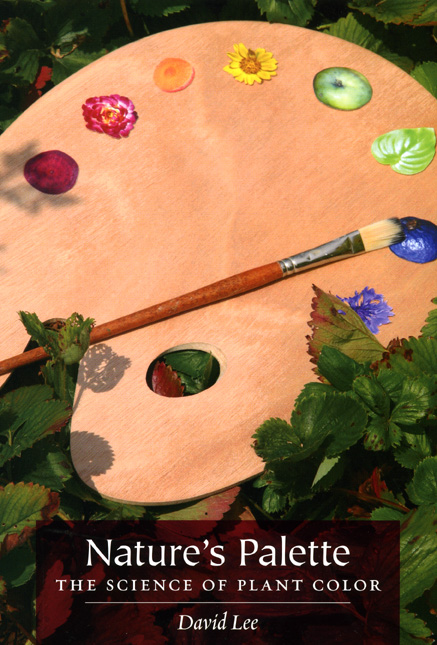From Chlorophyll to Carbon Dating

Two recently published science books were reviewed earlier this week in the January 19 edition of the UK daily, the Guardian. The longer of the two reviews gives a nice synopsis of David Lee’s new book, Nature’s Palette: The Science of Plant Color:
Ceaseless activity hums through David Lee’s book, which is about the chemicals and light-bending growth-layers that plants produce; zillions of minute brews of organic dyes allow preferred wavelengths in the visible spectrum of solar radiation to pass through them, strike the plant tissues, be scattered and reflected back as colours…
Once you’ve followed him through a basic course… in molecular chemistry, plant biology and optic operations, he gets to wondering exactly what job the colours and patterns do in and for each growth. The leafy stuff is easy—chlorophyll absorbs all of the visible wavelengths, except green, to turn light energy to chemical energy as sugar through photosynthesis.… [But] beyond green chlorophyll [Lee explores] the other great chemical families—the yellow-orange carotenoids and the pink-red flavonoids, especially the anthocyanins—and a swatch of minor concoctions, including indigo indoles, and quinone methides that redden the hearts of rosewood and sandalwood.
Read the rest of the article or navigate to our website to find out more about the book.
The Guardian also ran a shorter piece on Pascal Richet’s A Natural History of Time. Steven Poole writes for the Guardian:
What is time? How much of it has there been? This magisterial history begins with ancient myth, passing through Genesis, the Greeks, Arabic mathematics, and then European science through the centuries. The central question pursued by its protagonists is that of the age of the Earth. How to measure it? Count the generations in the Old Testament; count strata of rock or fossils; count how much salt there is in the sea; count how much time it would take for a large body to cool down; count how much uranium has decayed into lead. At last, in the 1950s, we arrive at a reliable age for the Earth of about 4.55 billion years.…
The book is gorgeously written, finding almost as much beauty in wrong theories as right ones; and Pascal Richet (himself a geophysicist) pays highly sympathetic attention to the subjects of his numerous thumbnail biographies.
Read the rest of the review.